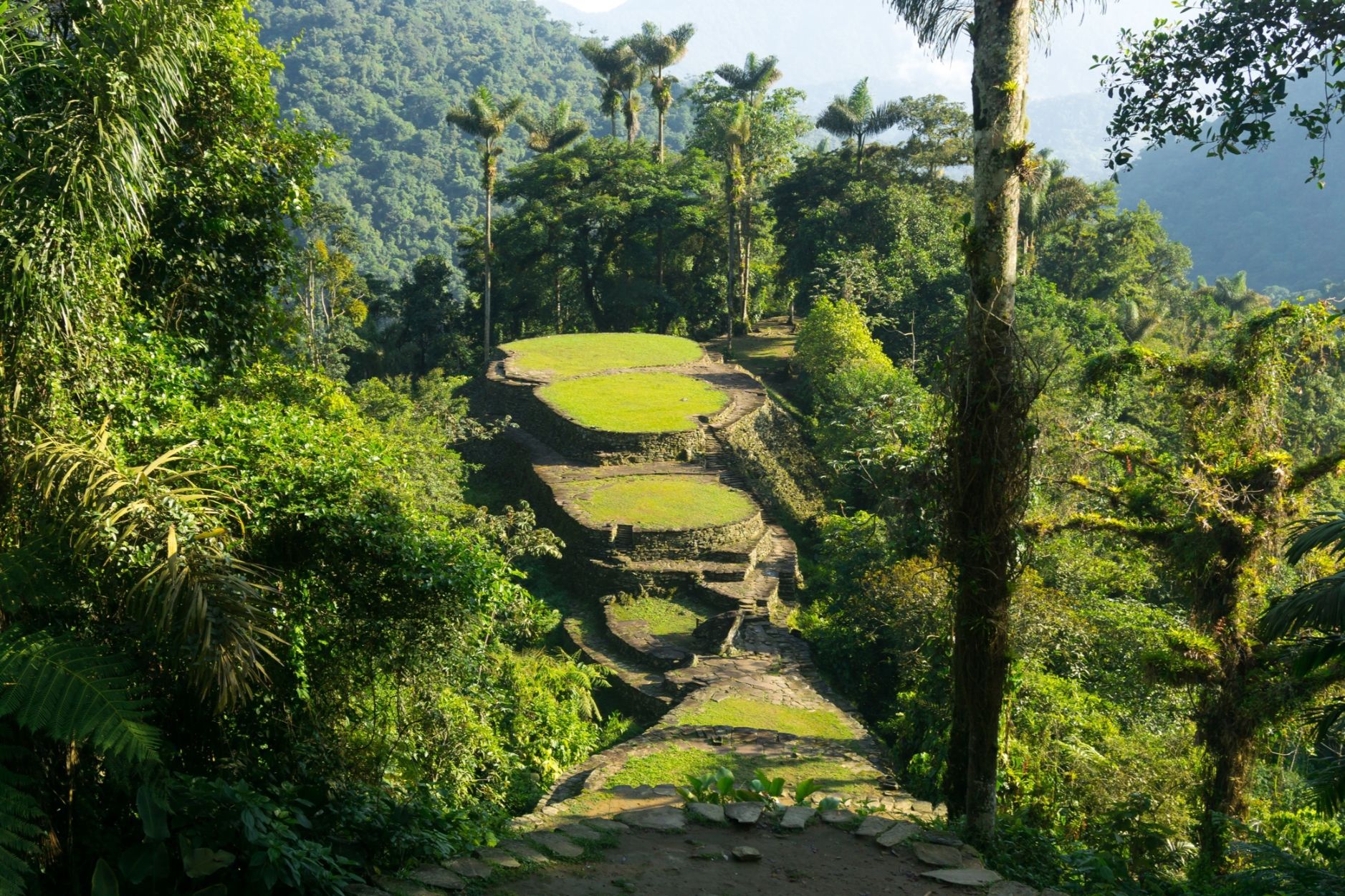
When I headed off to hike to the Lost City in Colombia, I didn't know much about what I was getting into. The trek is one which takes you high in the mountains of the Sierra Nevada de Santa Marta jungle in Colombia, deep into the rainforest. There you will find the indigenous settlement of Teyuna, which is better known by visiting tourists as Ciudad Perdida, in Spanish, or as the Lost City in English.
Accessible only by 1200 steep stone steps, hidden along a river bed, Teyuna is a remarkable layered clearing; a place of stone circles and ancient structures.
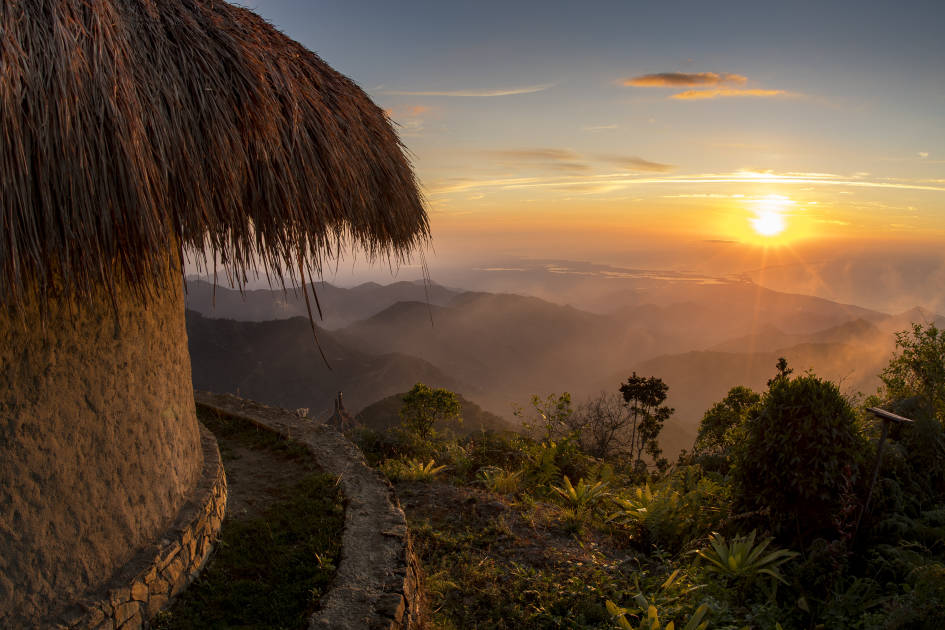
Several days hike into Tayrona National Park, the ancient sacred settlement dates back to 800AD. That’s 650 years before Machu Picchu was built in the neighbouring (though far-off) nation of Peru. The first of the stone circles is guarded almost entirely by trees. The second, accessed through several hundred more stone steps, looks out over the entirety of the jungle. It is, simply, sublime.
There are stone circles spread around Teyuna, rising to a high point where mamos – the spiritual leaders of indigenous people – go to communicate with the chief spirits of the jungle. It’s a truly remarkable settlement, only accessible by a tough multi-day hike through beautiful but dense rainforest, and it’s absolutely drenched in amazing stories, both old and new. In more recent history, this was the site of a fairly high-profile kidnapping (though we'll get onto that later), and while it's safe now, you will notice a military presence on site.
The reasons why this is one of the best hikes in Colombia are listed below. But there is also a few things I wish I had known before going on this adventure. Here are my travel tips for hiking to Teyuna, Columbia's Lost City.
1. Learn the History of the Indigenous Tribes
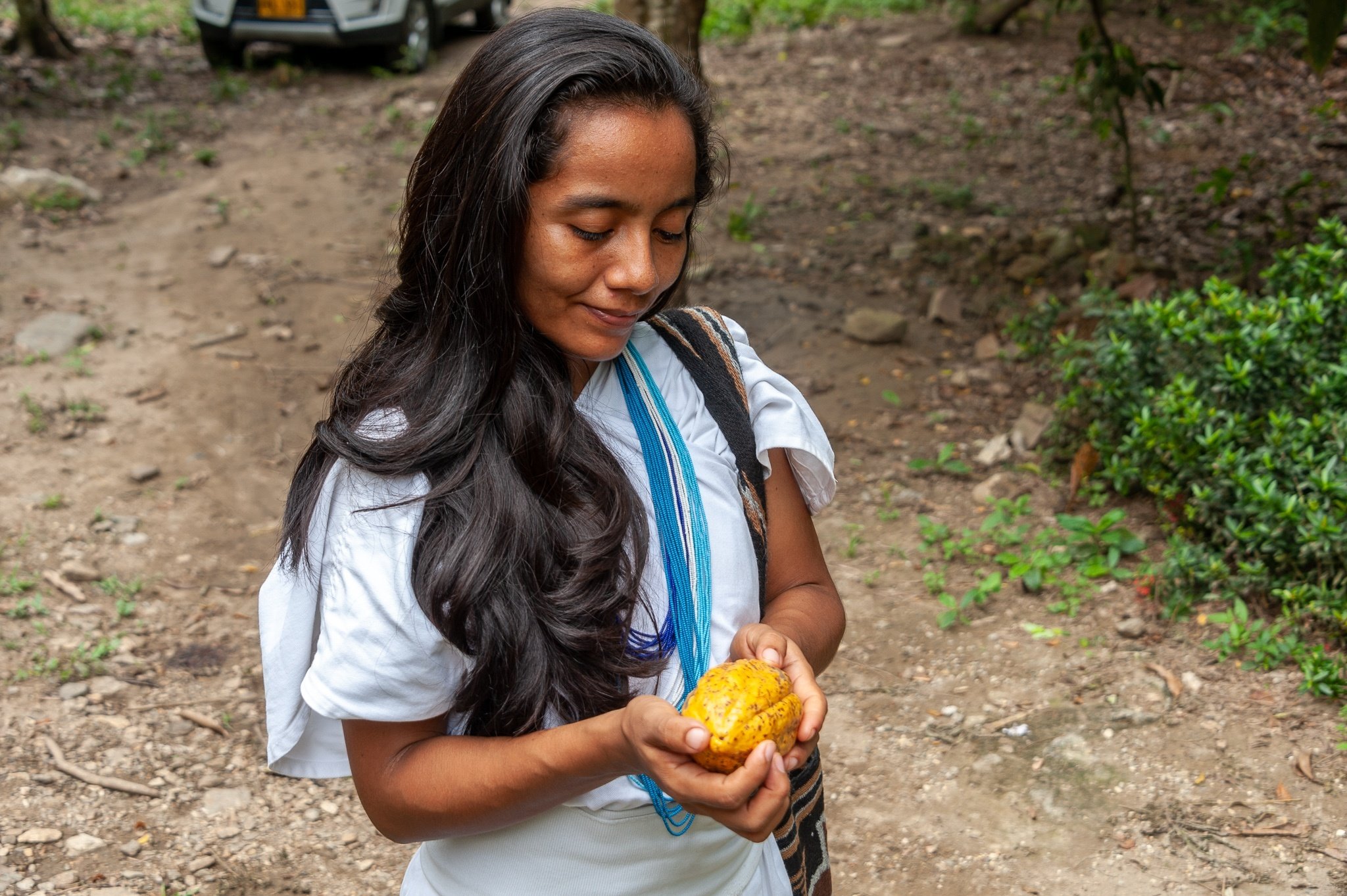
The immediate elephant in the room of visiting Teyuna is this: should we really be visiting an indigenous settlement at all? Does it actually benefit the indigenous tribes, or is it all just for western tourists? The history is important.
The first outside visitors actually came to Teyuna in 1973. They were gold diggers and graverobbers, and after golden relics began to turn up on the black market, archaeologists went up in 1976 and restored Teyuna. Tourism began in 1982, and at the time, it didn’t involve or benefit any of the indigenous tribes – the Kogi, Arguaco, Wiwa and Kankuamo – that live in the Sierra Nevada de Santa Marta mountains.

The Colombian government has a troubling past with their indigenous people and didn’t recognise the tribes as part of the Colombian State until 1991. But the new constitution in 1991 recognised the tribes as indigenous people and gave them back autonomy over their land. They also gave the tribes back land that had been taken from them previously.
Some of the tribes are now using the adventure tourism that comes into Teyuna to raise money to buy back even more of that land and to grow and sustain their communities. They sell handmade bags, bracelets, bowls, and coffee, as well as working as guides.

During a stop on my trek to Teyuna, members of the indigenous Wiwa tribe told me (through a translator, as they only spoke Spanish and their native tongue) that they were hand-selected by the mamos for their jobs, whether that is to work as a guide or any other position in the community. The tribes describe themselves as “guardians of the heart of the world”. They are not in charge of nature but part of it, and as they get back land, they return it to jungle. They want to teach visitors their messages and beliefs to take away.
The fact that the indigenous people of the jungle have autonomy of their land is crucial. It means that if they wanted to close to tourism, they could. Currently only 160 people are allowed to the Lost City on any given day, for example. Only five companies are authorised to give tours. And tours are shut for September, while they use the temple for meetings between mamos.
It’s crucial tourists are respectful; that you treat the indigenous tribes like you would like to be treated – not as tourist attractions, but as people. Ask before taking someone’s photograph, for example, and show complete respect to their history, rituals and traditions. But also, make sure you take every chance to speak to, learn from and connect with these amazing people, who have wisdom beyond most of us.
Come Properly Prepared for a Rainforest Hike
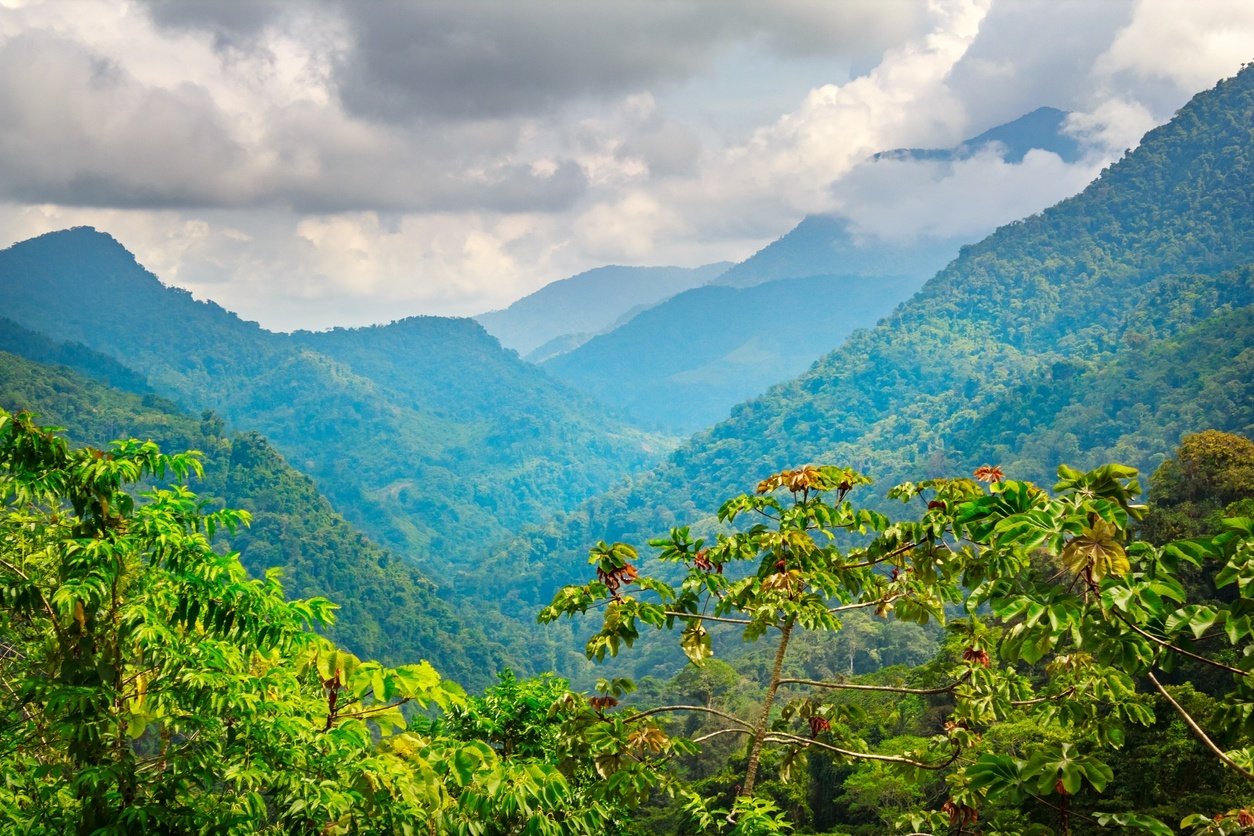
Look at this as the ‘when to go’ and ‘what to bring’ section of the Lost City guide. The Sierra Nevada de Santa Marta jungle is a rainforest. The clue is in the name. Even if it’s 40 degrees and you’re hiking in the baking heat, uncovered (thankfully most hiking is under the shelter of trees), there’s every chance that in half an hour the heavens will open and you’ll be hiking in the definition of torrential rain. This, when all is said and done, is fine.
I went in August, just before the rainiest month of the year in September, and actually preferred hiking in the rain to the baking heat (there isn’t too much in between at that time of year) because it’s a lot cooler. But you really do need to come prepared. What I mean by that is that you should make sure you have decent, waterproof hiking boots that can really take a beating.

You should make sure you have an effective, lightweight waterproof jacket you can grab and pack away at a second’s notice. And it’s also well worth bringing a second pair of shoes – like a pair of Crocs if you can put the fashion faux-pas to the side – that pull on and off easily that you can use for river crossings, to keep the insides of your main hiking boots dry. Quick-drying clothes in general are great picks for the trip.
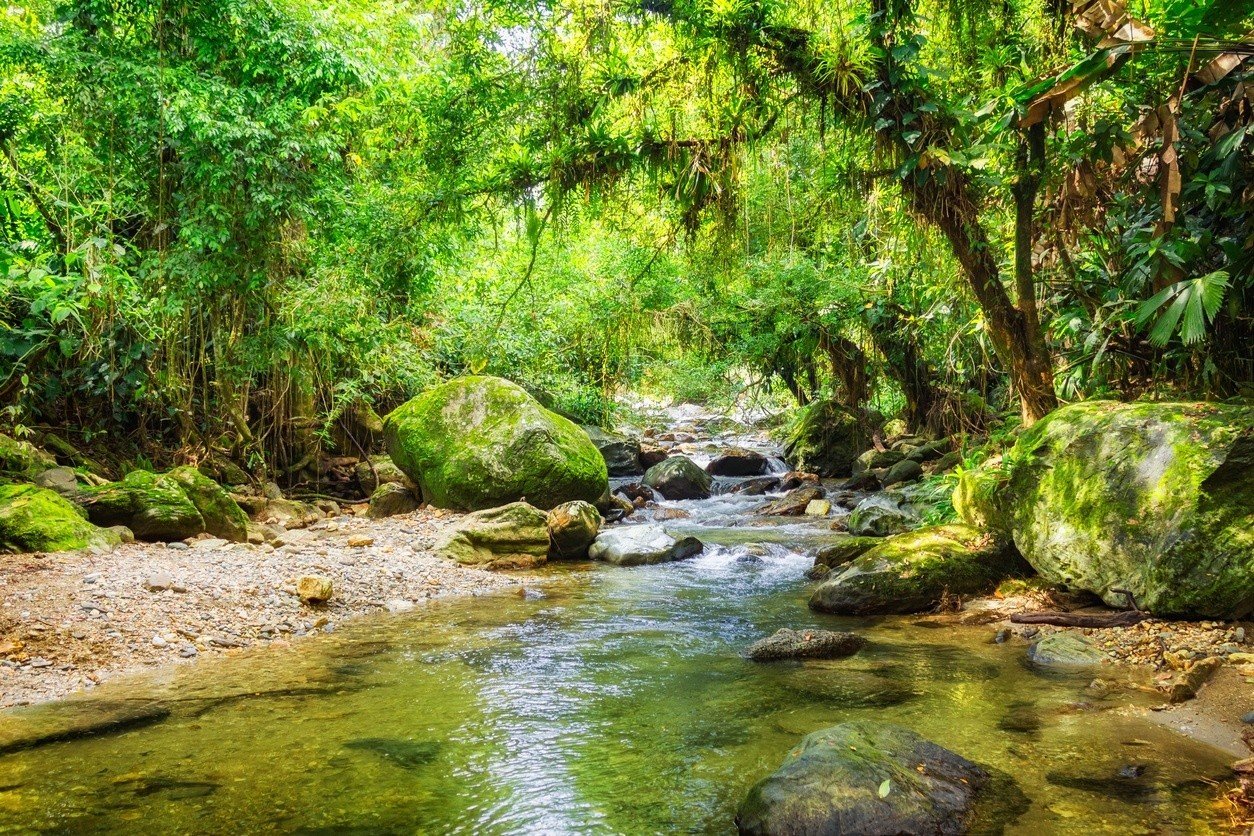
It’s also well worth bringing a walking stick. You may think they’re just for old folk but they take a serious amount of tension off your lower back, hips and knees – something particularly crucial if you’re going to have a backpack on all day (though there may be a ‘mula’ to transport your luggage) and be hiking up some really quite tough gradients.
When the rain comes and the mud turns waterslide, if you don’t have a walking pole, you’re going to be working hard not to slip. Of course, weather is seasonal. December-March is the dry season. So if you really don’t like getting wet, this is the time to go. The rivers will be lower and easier to cross, but it’ll also be busier. April-November is the wet season (though again, the hike is shut in September). Also, if you’re prone to mosquito bites, you can’t bring enough repellent. Seriously. Coat yourself in the stuff!
Ask for Stories, and You Shall Receive

For a lot of people the first that comes to mind when they think of Colombia are drug cartels and kidnappings. Largely due to the success of the Netflix series ‘Narcos’. And the drug wars have shaped Colombia as a country in many ways. Indeed, they’ve shaped the Lost City and the mountains around it.
The Sierra Nevada de Santa Marta lowlands were rife with rebels and paramilitaries in years past. There was mass coca leaf production and so helicopters would spray herbicides on the crops, leaving long-lasting damage on land productivity. There was widespread displacement of the local people, including of the indigenous tribes.

There was also a very high profile kidnapping in the Lost City in 2003. On 12 September, a combination of British, Spanish, German and Israeli tourists were kidnapped at gunpoint by leftist guerrillas who wanted to pressure the government on political issues. They were taken from the Lost City itself, where tourists used to spend the night.
One of the guides of the group, actually still works as a tour guide taking groups of tourists to the Lost City. We met him while he was guiding a group on the route and he told us the story of the day and happily answered questions. He was keen to emphasise though that while this was relatively normal at the time, it doesn’t happen anymore. And when you get going on the hike, you’ll see why.
After the kidnapping, the government built a high mountain battalion, and you’ll now see armed Colombian guards carrying rather large guns along much of the route. If you pass through Kuskunguena, an army barracks thousands of feet high, you’ll even see they’ve got a makeshift football pitch. I actually ended up in a small game of three aside with them!
The army presence on the trails around the Lost City, and at Cidudad Perdida itself is definitely notable. Particularly at the Lost City itself, where you’re likely to see a military helicopter landing at some point or other. The soldiers are there to show that the route is safe to hike on, and all the soldiers I spoke to were very pleasant. The Lost City hiking route has been fully re-opened since 2005.
Get to the Lost City early!
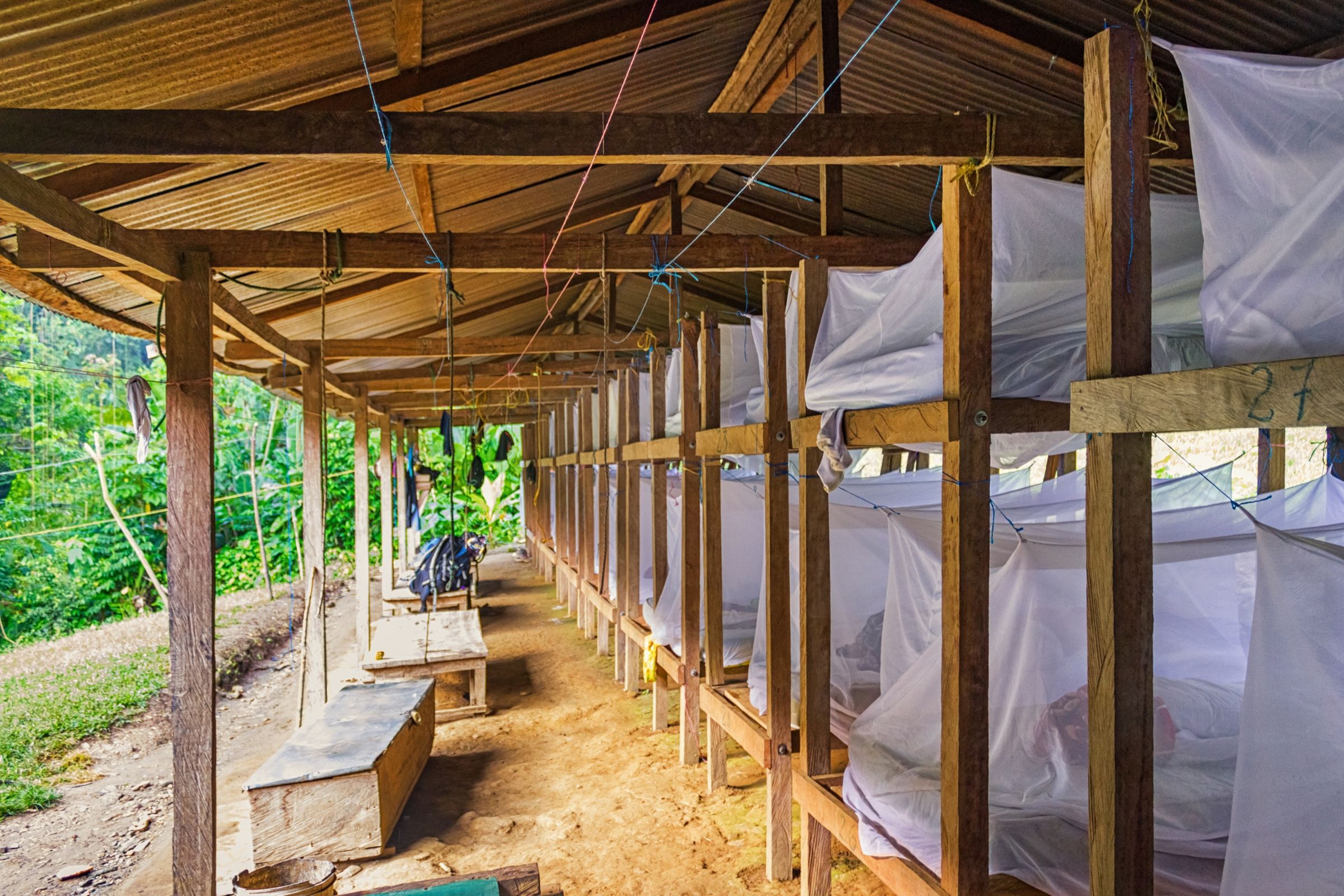
Before you ascend the 1200 stone stairs to the Lost City, you’ll spend the night in a camp about a kilometre away. There’s two floors of bunk beds and options to stay in a hammock as well. This is one of the bigger accommodations, though a lot of the accommodation on the route is similar to this, but just on one floor.
This is a great little spot to meet other travellers and there’s a beautiful natural pool with a rock water slide in the river, which you should definitely take the time to check out. It’s also easily the busiest accommodation you’ll stay in on the trip though, because while everyone takes different routes to the Lost City, most will use this as their base before ascending.
This means that if you wake up late the next day, you’ll be hiking to the Lost City surrounded by tourists. And the staircase to get up there is actually a rather challenging scramble at times, so you don’t want added pressure or people in your way. You also don’t want your first view of the place to be when it’s full of other people.
The solution to this, naturally, is to be the first people up! This, of course, is entirely up to your group and your guide, but I’d recommend asking for an early start. It might mean leaving camp while it’s still dark, but it really adds to the awe of the moment you emerge at Teyuna, and learn all about the ancient settlement from your guide.
If There’s An Optional Extra Hike to a Waterfall… Take It
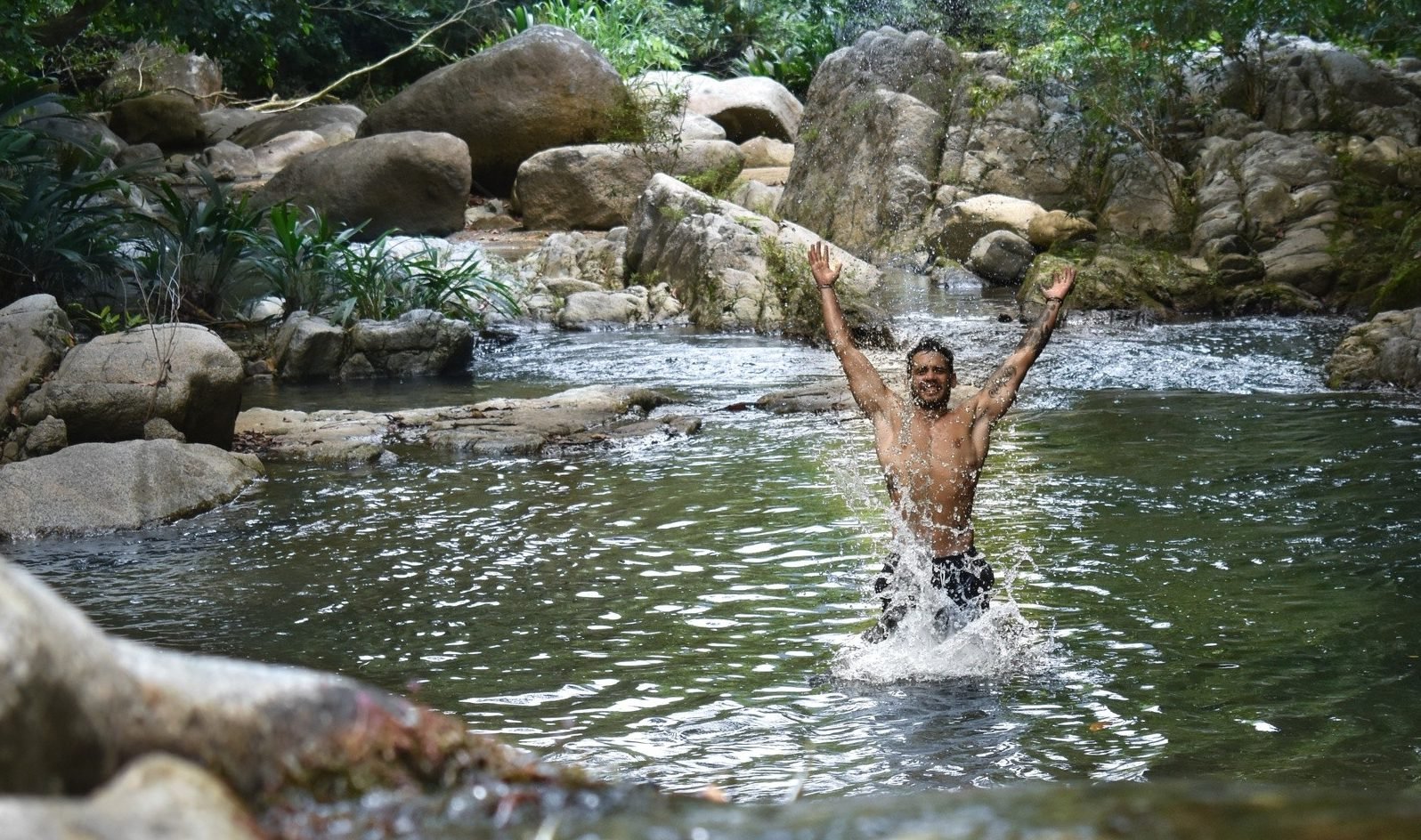
The trek to Ciudad Perdida is challenging. It’s a multi-day trek, with some intense gradients, often in some extreme weather, and then when you’ve finished your hike and filled yourself up with food (fear not on that front, that food is excellent!), you’re going to be tired. You’re going to be exhausted. And if you get a bit of downtime in one of the camps, you’ll probably just want to chill out, play some cards or have a nap.
However, if your guide gives you a nudge and says there’s an optional little 15 minute hike going to a nearby waterfall, we’d recommend that you take it. This happened a couple of times on my hike to the Lost City and the places we would end up were comfortably some of the most remote and beautiful spots I’ve seen. Proper secretive rainforest lagoons buried in the forest. It’s not easy to get that far into any rainforest, so you may as well make the most of it while you’re there!
Make the Most of Your Time in Santa Marta
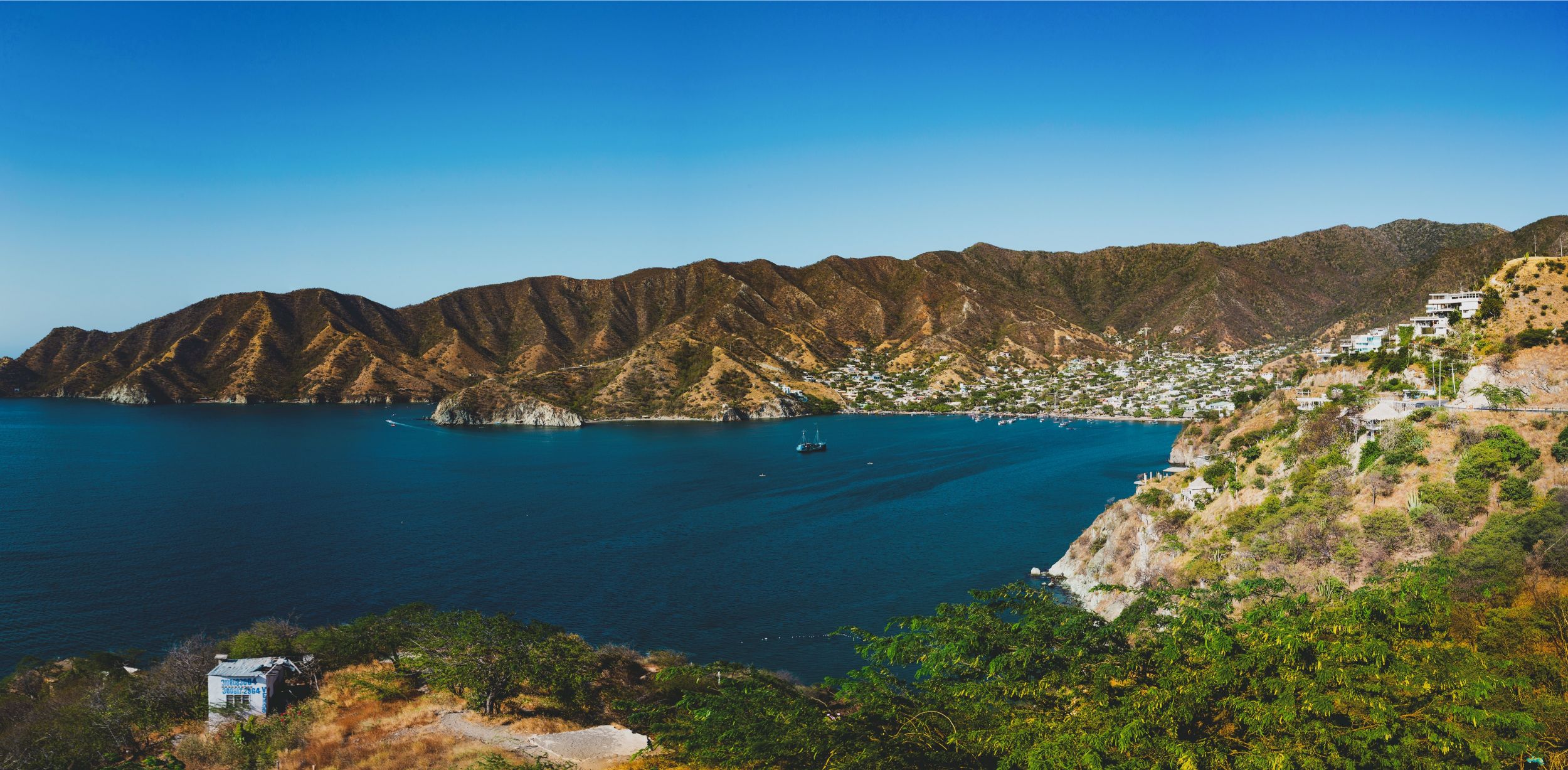
Let’s finish on a point outside the jungle. Santa Marta is the gateway city to the Sierra Nevada de Santa Marta mountain range (hence the name) – and it’s an awesome little city! Santa Marta itself is a coastal city on the Caribbean Sea. There’s a main beach, with markets along the coast line and people escaping to the water to cool themselves down from the Colombian heat.
The local library is named after the creator of magic realism Gabriel García Márquez (who was born in Aracataca not far away), and there’s a 22ft tall bronze statue of wavy-haired Colombian footballer Carlos Valderrama outside the stadium of the local team – though the stadium is a bit further out of the city centre. Wander further in and you’ll find narrow streets full of restaurants and trendy bars – not least the terrific Crabs Bar, a crab-themed rock bar (of all things).

If it’s champeta music and dance you’re after meanwhile, the sweaty La Puerta bar is a great recommendation. These small streets join up to huge public squares or join busier strips, and it’s no oddity to see local break dancing groups busking in some of the main areas. Parque de Los Novios is the centre of the historic centre and well worth your time, and Casa de la Aduana, the Tairona Gold Museum, is a great history lesson on the beginning of the native communities.
The shops near the beachside tend to be a bit more touristy than those further in. Overall, though, the defining qualities are the beautiful Caribbean Sea beaches, and the beginnings of the rolling mountains which make up the skyline behind. Just make sure you take precautions, and ask your guides about where’s safe to go!
If you want to discover Ciudad Perdida for yourself, check out out trip to trek Colombia’s mountains and the Lost City!

